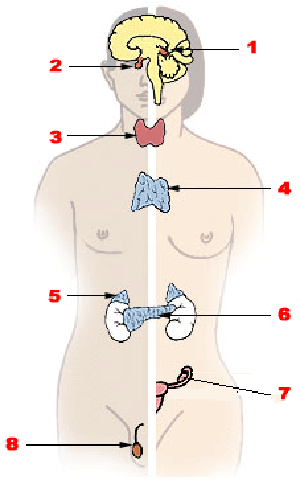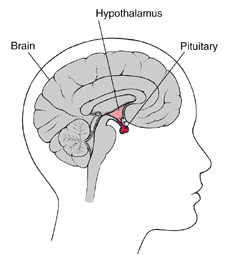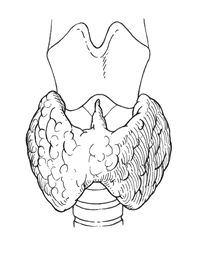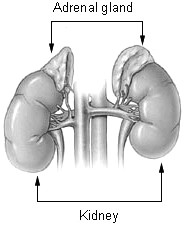The Endocrine System
What is the System?
- Made up of glands that produce and secrete hormones _________________________
- Regulation of growth, metabolism, and ______________________________
- Responses to ________________________________
- Maintains _____________________________________
BIG IDEA:
 Major Structures & Location
Major Structures & Location
Hypothalamus (part of the brain)
1. Pineal
2. Pituitary
3. Thyroid & Parathyroid
4. Thymus
5. Adrenals
6. Pancreas
7. Ovary
8. Testes
Types of Glands
Endocrine Glands =
Exocrine Glands =
Control of Hormonal Secretions - Negative versus Positive Feedback
Negative Feedback
When the levels go above or below a _______________________,
the endocrine system secretes hormones to lower or raise the level.
Examples:
Positive Feedback
Example:
Pituitary Gland

Location:
Why is it called the master gland?
What part of the brain controls it?
Anterior Pituitary Hormones
Prolactin or PRL –
Growth hormone or GH
Adrenocorticotropin or ACTH –
Thyroid-stimulating hormone or TSH -.
Luteinizing hormone or LH –
Follicle-stimulating hormone or FSH
Posterior Pituitary Hormones
Oxytocin –
What is Pitocin?
Antidiuretic hormone or ADH –
What is a diuretic?
Thyroid Gland

The thyroid hormones control your _________________________, which is the body's ability to break down food and store it as energy
Thyroid Hormones:
Thyroxin (T4) & Tri-iodothyronine (T3) - increase the rate at which cells release energy from carbohydrates
Calcitonin – regulates the blood concentration of calcium
BMR =
Disorders of the thyroid
Goiter
Hypothyroidism (cretinism)
Hyperthyroidism (Grave’s disease)
Cancer
Parathyroid Gland
Located behind the thyroid, four tiny glands that help maintain calcium and phosphorous levels
Parathyroid Hormone (PTH) - takes calcium from the bones to make it available in the blood
Adrenal Glands Located above each kidney.

Adrenal Cortex = ______________ area Medulla = ______________
Adrenal glands produce _______________________________
Epinephrine & Norepinephrine – increased heart rate, breathing rate, elevated blood pressure (fight or flight, response to stress)
Aldosterone –helps kidneys conserve sodium and excrete potassium, maintaining ___________________
Cortisol – glucocortoid, keeps blood glucose levels stable; response to ___________
Adrenal Sex Hormones - androgens (male) and estrogens (female)
Adrenal Gland Disorders
Cushing’s Disease
Addison’s Disease
Pancreas

Large gland behind stomach, maintains healthy blood sugar (glucose) levels.
Contains islands of cells called the Islets of Langerhans which secrete glucagon and insulin
Glucagon – stimulates the liver to break down glycogen, Raises ______________________________________
Insulin – decreases blood sugar concentrations, affects the ____________________ of glucose by cells
Diabetes Mellitus –insulin deficiency, blood sugar rises (hyperglycemia) and excess is excreted in the urine
Type I
Type II
Diabetes Insipidus
Gestational Diabetes
What is a diabetic neuropathy?
Other Endocrine Glands
Pineal Gland – secretes melatonin which maintains _____________________________
Thymus Gland – large in young children, gradually shrinks with age, secretes thymosins, important to ______________________
Reproductive Glands – testes and ovaries – testosterone, progesterone, estrogen
What is gonadotropin?
What are steroids?